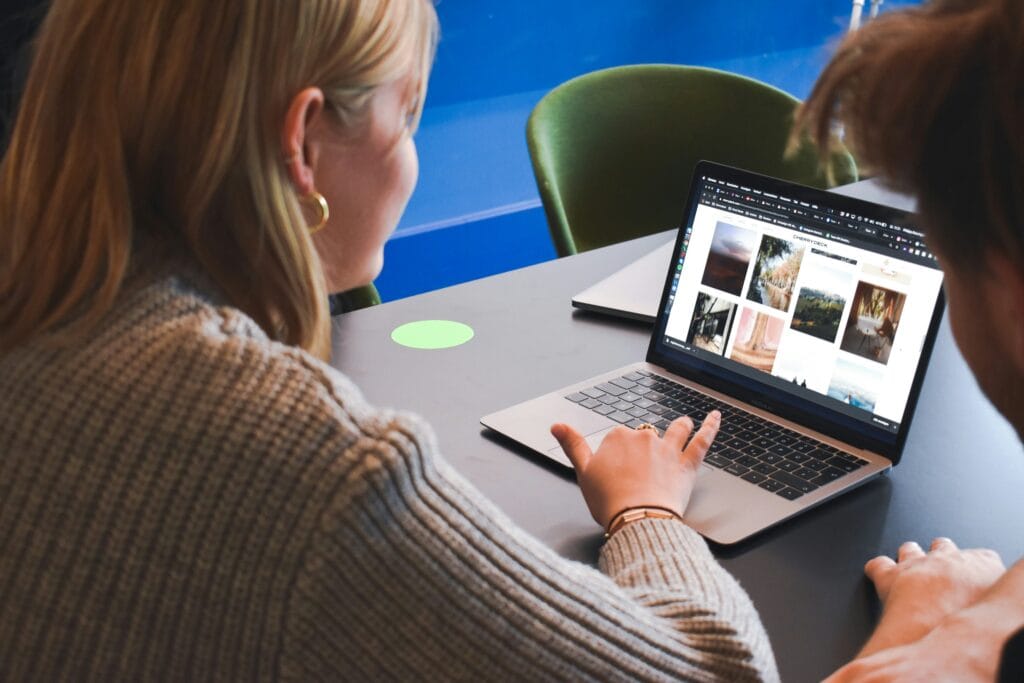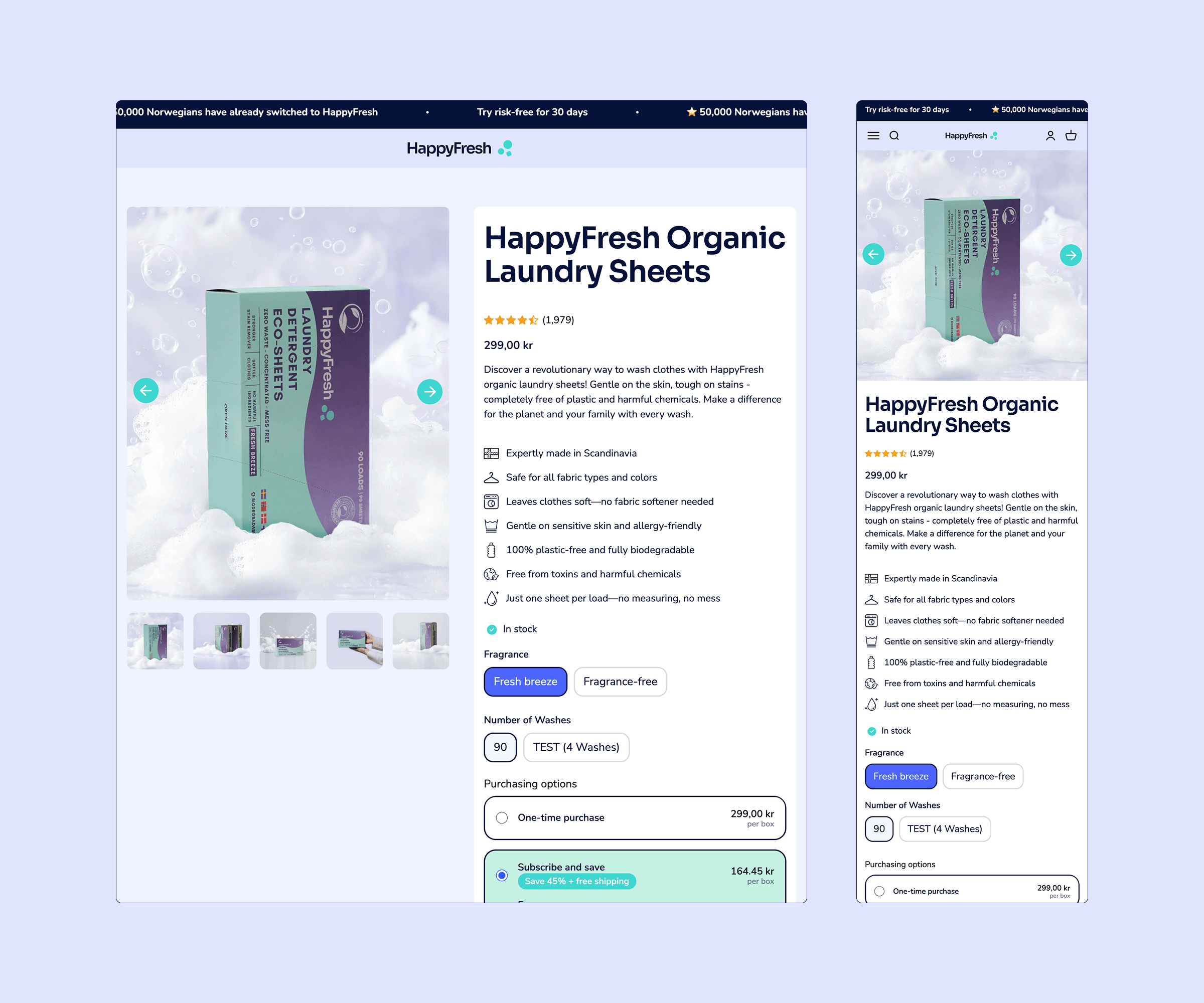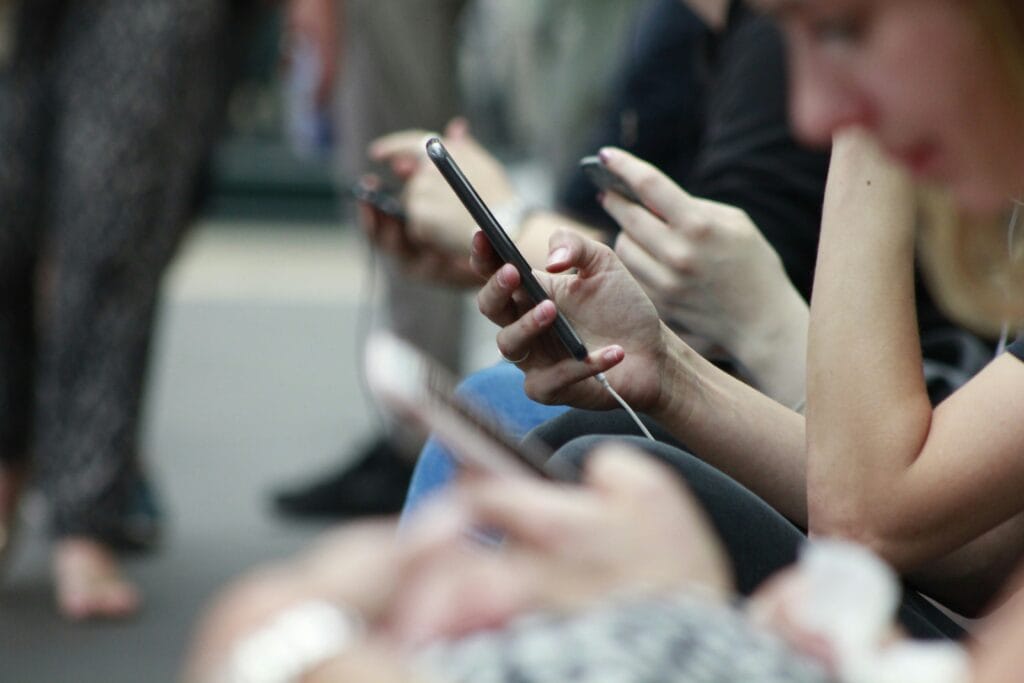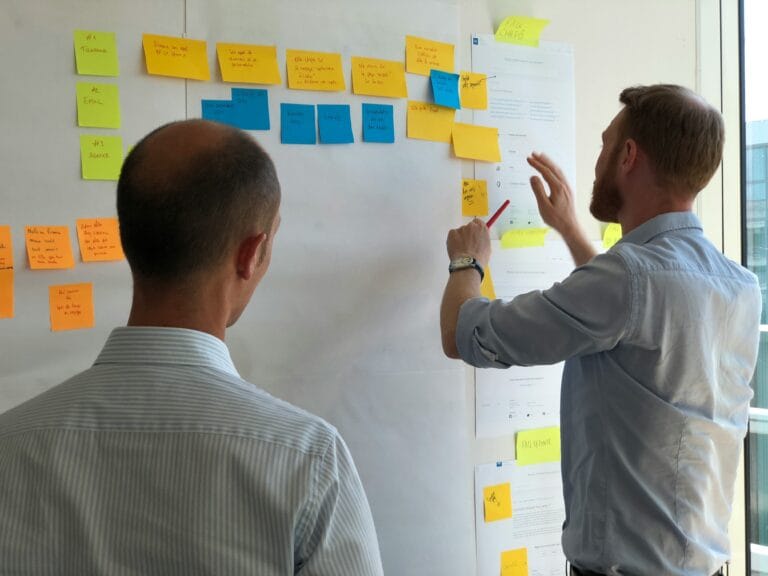Here’s something most eCommerce brands get completely wrong: they treat Cyber Monday like a finish line instead of a starting gun.
Right now, while your competitors are sleeping off their BFCM hangovers and patting themselves on the back, you’re sitting on a goldmine. I’m talking about the 72 hours between Tuesday, December 3rd and Thursday, December 5th, 2025. This window is weird, profitable, and criminally underutilized.
Think about what just happened. You spent weeks (maybe months) driving traffic to your store. You’ve got abandoned carts stuffed with buying intent. First-time customers who don’t yet have brand loyalty. Browse data that tells you exactly what people want. And here’s the kicker: your competition just went completely silent. They’re already pivoting to their December campaigns, which means you have a warm, engaged audience with basically zero noise.
I’ve watched brands pull an extra 15-20% revenue in this three-day stretch with a fraction of the ad spend they burned through BFCM weekend. The secret? A focused post cyber monday strategy that treats Tuesday through Thursday like its own mini-event. We’re talking targeted cart recovery, smart browse abandonment sequences, and rapid retention plays that cost almost nothing but convert like crazy.
The best part? You already did the hard work. Now you just need to know what to do with it, hour by hour. Let’s break down exactly how to turn your BFCM aftermath into your most profitable week of Q4.
Why the Post-Cyber Monday Window Is Your Secret Profit Zone
You know what’s wild? Right now, while you’re reading this, most of your competitors just went radio silent. They blew their entire Q4 budget over the weekend, sent their last “FINAL HOURS” email at midnight Monday, and now they’re basically taking a nap until mid-December. And that’s exactly why the 72 hours after Cyber Monday might be the most profitable window you’re ignoring.
Here’s what actually happens in those three days. Your customers aren’t suddenly done shopping. They’re still in full buying mode, but now they’re doing something different. They’re comparing. They’re second-guessing. They’re thinking, “Did I really get the best deal?” According to recent BFCM behavior analysis, these post-event shoppers are experiencing serious deal FOMO, and they’re actively looking for reasons to make one more purchase before shifting into holiday gift mode.

The Competition Just Disappeared (And Your Costs Dropped)
Let me paint you a picture of what your ad dashboard looks like right now. Facebook CPMs that were $45 on Sunday? They’re probably sitting around $18 today. Email inboxes that were getting hammered with 47 promotional messages per day? Now they’re getting maybe 12. Your customers’ attention isn’t split between 200 screaming brands anymore. It’s just you and a handful of other stores that actually understand this window.
When HappyFlops ran their post-Cyber Monday recovery campaign last year, they saw email open rates jump 528.2% compared to their standard promotional sends. Not because they suddenly became email wizards, but because everyone else stopped showing up. The noise dropped, and suddenly people could actually hear them.
The Psychology Nobody Talks About
Your shoppers right now are in this weird mental state. They spent money over the weekend, sure, but they’re not tapped out. They’re actually primed to spend more because they’ve already broken the seal. Think about it like this: it’s way easier to get someone to buy a second time within 72 hours than it is to get them to make that first purchase.
Plus, there’s this underlying anxiety happening. “Did I miss something better?” “Should I have waited?” “What if there’s one more deal?” Data from 2024 shows that automated flows during this period converted at 63.66%, compared to 44.57% for standard abandoned cart flows. That’s not a typo. People are literally more ready to buy in these three days than they are during your regular cart recovery efforts.
Why Friday Changes Everything
Here’s the urgency part nobody mentions. By Friday morning, your customers mentally shift gears. They stop thinking about themselves and start thinking about gift shopping. That self-purchase mindset you’ve been riding since Thanksgiving? It evaporates. Suddenly they’re making lists, checking budgets twice, and your window for post-holiday cart recovery closes faster than you’d think.
The brands making serious money right now aren’t the ones who screamed the loudest on Monday. They’re the ones who stayed smart on Tuesday, Wednesday, and Thursday.
Look, I get it. You’re exhausted. Your team is fried. The last thing anyone wants to do is launch another campaign. But this isn’t about working harder. This is about working smarter with a post cyber monday strategy that captures high-intent buyers while your competition is literally asleep. The next sections are going to show you exactly how to do that without burning out your list or your team.
Because here’s what I’ve learned after years of running Q4 campaigns: the stores that win Q4 aren’t the ones with the biggest Black Friday. They’re the ones who understand that black friday recovery tactics matter just as much as the main event. And right now, you’ve got roughly 60 hours to capitalize on the easiest sales you’ll see all year. Smart brands know that lead nurturing transformed their eCommerce game by staying engaged with customers during these critical windows, and your order confirmation might be your secret sales weapon for converting these post-event shoppers into repeat buyers.
Hour 0-24: Emergency Cart Recovery Blitz

Okay, it’s Tuesday morning. Your inbox is probably a mess, your ad spend feels like it just ran a marathon, and you’re wondering if you can finally take a breath. Not yet. The next 24 hours are where you separate the decent Q4 from the legendary one. This is your post Cyber Monday strategy moment, and it starts with one thing: getting those abandoned carts back.
Here’s what’s happening right now. People who loaded up carts on Monday are waking up with buyer’s remorse, second thoughts, or just forgot they never hit “Complete Order.” Your job? Catch them before they move on or, worse, buy from someone else.
Segment Your Abandoned Carts Like Your Revenue Depends on It
Not all abandoned carts deserve the same treatment. Someone who left a $500 order sitting there is different from someone who bailed on a $30 impulse buy. Start by splitting your carts into three buckets:
- High value ($200+): These people were serious. They need urgency and exclusivity, not desperation.
- Mid value ($75-$199): Still interested, probably comparing options. A small nudge works here.
- Low value (under $75): Impulse territory. Free shipping or a tiny discount can close this fast.
You can also segment by product type. Someone who abandoned a high-ticket item like furniture needs a different message than someone who left skincare products in their cart. When Rejoiner analyzed cart recovery emails, they found that personalized product references dramatically outperformed generic “you left something behind” messages.
Your First Email Goes Out in 2-4 Hours, Not Tomorrow
Timing is everything in post-holiday cart recovery. According to TargetBay’s 2025 analysis, 40% of brands send their first cart recovery email within an hour of abandonment, and 68% send within six hours. But here’s the sweet spot: 30 minutes to two hours after they bail.
Why? Because they’re still in shopping mode. Their credit card might still be on their desk. The tab is probably still open on their phone. Strike while the intent is hot.
Your subject line needs to do one job: get opened. Skip the “Oops, you forgot something!” garbage that 60% of brands are still using. Try these instead:
- “Your [Brand Name] order is waiting”
- “Still thinking about it? Here’s why you should grab it”
- “We’re holding your cart for 4 hours”
Notice what’s missing? Em dashes, cutesy puns, and anything that screams “automated email.” Keep it direct.
High-Value Carts Get the SMS Treatment
If someone abandoned a cart over $200, email alone isn’t enough. SMS has a 90% open rate within three minutes, and for high-value carts, that speed matters. Your message should be short and create genuine urgency:
“Hey [Name], noticed you didn’t finish checking out. Your cart ($437) is reserved until 6 PM today. Grab it here: [link]”
That’s it. No fluff, no desperation. Just a clear deadline and a link. The key is making it feel exclusive, not pushy. When Naked Root implemented targeted SMS for abandoned carts, they saw their monthly revenue jump significantly by catching high-intent shoppers before they cooled off.
Structure Your Offers Based on Cart Value
Here’s where most stores mess up. They blast the same 15% discount to everyone, which trains customers to abandon carts on purpose. Instead, tier your offers:
For carts under $75: Free shipping works better than percentage discounts. According to abandoned cart research, 5% of recovery offers were free shipping, and they converted like crazy for lower-value carts.
For carts $75-$199: Use 10% off or a fixed dollar amount ($10-$15 off). The psychology here is simple: $15 off feels bigger than 10% when the cart is $120.
For carts $200+: Skip discounts entirely in your first email. Instead, use scarcity: “Only 2 left in stock” or “Cart expires in 4 hours.” If they don’t bite, your second email (8-12 hours later) can introduce a modest offer, but lead with exclusivity first.
Browse Abandonment: The Forgotten Goldmine
Not everyone makes it to the cart. Tons of people browsed your site during BFCM, looked at products, maybe even hit “Add to Cart” but never got to checkout. These browse abandoners are sitting ducks for Q4 revenue optimization. Understanding why your shoppers leave before buying can help you craft better recovery messages.
Send them a simple sequence:
Email 1 (6-8 hours after browsing): “Still interested in [Product Name]?” Show the product they viewed with social proof. “2,847 people bought this during Cyber Monday.”
Email 2 (24 hours later): Create urgency. “Price goes up tomorrow” or “Only available until Friday.” Pair it with a small incentive if you need to.
The magic here is using browsing data to personalize. Someone who spent five minutes looking at your winter coat collection is different from someone who clicked one thing and bounced. Tailor your message accordingly. This is where dynamic content wins over your shoppers by showing them exactly what they care about.
Email Template That Actually Converts
Forget those seven-paragraph essays. Your cart recovery email should look like this:
Subject: Your cart is reserved (until 6 PM)
Body:
Hi [Name],
You left [Product Name] in your cart. We’re holding it until 6 PM today, then it’s back in the wild.
[Product Image]
[Product Name] – $[Price]
Still on the fence? Here’s what other customers are saying:
“[Short testimonial]”
[Complete Your Purchase Button]
Questions? Just reply to this email.
That’s it. No fluff, no desperate begging, just clear information and a path forward. When HappyFlops cleaned up their cart recovery emails to this format, they saw their email revenue jump significantly because people actually read and clicked. And don’t forget that your order confirmation might be your secret sales weapon once they do convert—use it to drive repeat purchases.
The first 24 hours after Cyber Monday are pure opportunity. Your competitors are napping. Your customers are still in buying mode. And you’ve got a list of people who were literally one click away from giving you money. Time to go get them back.
Okay, it’s Wednesday morning. Your BFCM campaigns are done, and you’re sitting on something valuable: a bunch of people who almost bought from you. They clicked your ads. They browsed your products. They added stuff to their cart. But they didn’t pull the trigger.
This is your money moment. Not next week. Not when you “get around to it.” Right now, while they still remember your brand and that product they were eyeing.

The Warm Traffic Gold Mine Nobody’s Mining
Here’s what makes this window special. These aren’t cold prospects. They’re warm leads who took action during the busiest shopping weekend of the year. According to retargeting performance data, website visitors who see retargeted ads are 70% more likely to convert than those who don’t. That number jumps even higher when you’re retargeting people who engaged during a high-intent shopping event.
The problem? Most brands treat all their BFCM traffic the same. They send one generic “thanks for shopping” email and call it done. But someone who spent 8 minutes on your product page is different from someone who bounced after 15 seconds. Someone who added three items to cart is screaming “I’m interested” louder than someone who just clicked through from an Instagram ad.
Your post Cyber Monday strategy needs to acknowledge these differences.
Platform-Specific Retargeting That Actually Works
Let’s get tactical. Each platform has its own vibe, and your retargeting needs to match.
Facebook and Instagram: Use dynamic product ads showing the exact items they viewed. Your creative should feel native to the feed, not like a desperate “BUY NOW” banner. Try carousel ads featuring the product they looked at plus 2-3 complementary items. The copy? Something like “Still thinking about these?” or “Your cart misses you.” Keep it light, not pushy.
Google Display and Search: Here’s where search intent matters. Someone actively Googling “[your product] reviews” two days after BFCM is basically raising their hand. Set up RLSA (Remarketing Lists for Search Ads) campaigns targeting people who visited specific product pages. Bid higher on these audiences because their intent is through the roof.
TikTok: This one’s different. TikTok users don’t respond well to traditional retargeting. Instead, create short-form content that feels like organic TikTok but features your product. Think “unboxing,” “how I style this,” or “why I finally bought this.” Target it to your warm audience, and it’ll feel like discovery, not advertising.
Bridge Offers: The Goldilocks Zone of Discounting
You can’t match your BFCM discount. Don’t try. But you also can’t go back to full price and expect conversions. Enter the Bridge Offer.
Here’s the framework: if you ran 40% off during BFCM, your Bridge Offer should be 20-25% off. Not as steep, but still compelling enough to overcome the “I’ll wait for another sale” objection. The key is positioning it correctly.
Don’t say “Extended sale!” That’s boring and expected. Try “Post-Holiday Preview Sale” or “Cyber Week Encore: 48 Hours Only.”
When HappyFlops tested different discount structures in their post-holiday campaigns, they found that a 25% Bridge Offer with strong urgency messaging (48-hour countdown) converted better than extending their 40% BFCM deal. Why? Because scarcity beats discount depth when your audience is already warm.
Make your Bridge Offer feel exclusive. “Because you shopped with us this weekend” or “Only for our Black Friday visitors.” It’s not just a discount, it’s recognition.
On-Site Tactics for Returning Visitors
Someone who visited during BFCM and comes back on Wednesday is showing serious intent. Your site needs to recognize that.
Exit-intent popups with new angles: They already saw your BFCM popup. Don’t show them the same thing. Instead, try “Before you go: here’s what other shoppers who viewed [product name] ended up buying.” Or use social proof: “347 people bought this since Monday.” Fresh angle, same goal.
Personalized product recommendations: If they viewed Product A but didn’t buy, show them Product A prominently when they return, plus items frequently bought together. Make it feel like your site remembers them (because it should). This type of dynamic content can significantly improve conversion rates for returning visitors.
Sticky bars with countdown timers: “Your 25% discount expires in 18 hours.” Simple, visible, effective. Don’t hide your Bridge Offer in the footer.
Budget Reallocation: Where to Spend Your Money
You’ve got limited budget left after BFCM. Here’s how to split it for maximum impact during this 48-hour window.
Retargeting ads: 50-60% of budget. This is your highest-intent audience. Facebook/Instagram dynamic ads should get the lion’s share, followed by Google Display for site visitors. TikTok gets the smallest slice unless you’ve got killer organic-style content ready.
Email: 25-30% of budget. You’re not paying per send, but you are investing in segmentation and personalization. Focus on cart abandoners first, then product viewers, then general site visitors. Three separate campaigns, three different messages. This is where lead nurturing becomes critical for converting warm prospects.
SMS: 10-15% of budget. SMS works best for cart abandoners and past customers. The message needs to be short and direct: “Your cart expires tonight. Complete your order: [link].” That’s it. No fluff.
Priority segments: Cart abandoners get first dibs on budget. Then people who viewed products for more than 2 minutes. Then anyone who visited 3+ pages. General traffic comes last.
Ad Copy Frameworks That Convert Fence-Sitters
Your BFCM copy was all urgency and scarcity. Your Wednesday copy needs a different tone. Here are three frameworks that work:
The “Still Available” Framework:
Headline: “Still in stock: [Product Name]”
Body: “Surprised? So were we. Grab yours before they’re actually gone.”
This works because it implies scarcity without screaming desperation.
The “Others Bought” Framework:
Headline: “Why 500+ people chose [Product Name] this weekend”
Body: “See what made this our #1 seller during Black Friday.”
Social proof beats discounts for warm traffic.
The “Last Chance” Framework:
Headline: “Your 25% discount expires Wednesday at midnight”
Body: “We’re extending our sale for 48 hours. After that, it’s gone.”
Urgency works, but make it feel like a favor, not a tactic.
Landing Page Optimization for This Window
Don’t send retargeting traffic to your homepage. Create dedicated landing pages that acknowledge where they’ve been.
Your hero section should reference their previous visit: “Welcome back! Here’s that [product category] you were checking out.” Show the specific products they viewed, not your general bestsellers. Include a countdown timer for your Bridge Offer above the fold.
Add trust signals prominently. Reviews, shipping guarantees, return policies. These people are on the fence, so remove every possible objection. And for the love of conversion rates, make your checkout process as simple as possible. This isn’t the time to require account creation or ask for their life story. Understanding why your shoppers leave before buying can help you optimize these critical touchpoints.
According to post-BFCM retention analysis, the brands that convert warm traffic most effectively are those that create continuity between the initial visit and the return visit. Your landing page should feel like a natural continuation of their BFCM experience, not a completely different store. Once you do convert these customers, don’t forget that your order confirmation is another opportunity to build lasting relationships.
The next 24 hours determine whether these warm leads become customers or disappear into someone else’s funnel. Your competitors are taking a breather. You’re not. That’s the advantage.
Hour 48-72: First-Time Buyer Activation & Rapid Retention
The First 48 Hours: Strike While They Still Remember You
Thursday morning hits different when you’ve just acquired hundreds (maybe thousands) of new customers. Your inbox is probably still recovering from the weekend chaos, but here’s the thing: your brand-new BFCM buyers are in a weird psychological space right now. They’re experiencing what I call “purchase clarity.” The deal fog has lifted, they’re looking at their bank statements, and they’re either feeling great about their decisions or having mild buyer’s remorse.
This is your moment. Not next week. Not when you “get around to it.” Right now, on Thursday and Friday.
According to recent Amazon BFCM analysis, brands that activate retention campaigns within 48 hours of acquisition see dramatically better results than those who wait. The window for establishing your post-cyber monday strategy is brutally short.
Welcome Series That Actually Work (Not the Boring Ones)
Look, I know you have a welcome series. Everyone does. But your standard “Thanks for signing up!” sequence isn’t built for BFCM buyers. These folks didn’t casually browse and subscribe. They made a purchase decision during the most competitive shopping weekend of the year, probably while comparing you to five other brands.
Your welcome series needs to do three things fast:
- Validate their choice: Show them they made a smart decision (social proof, reviews, “you’re in good company”)
- Set expectations: When will it arrive? What happens next? Kill the anxiety before it starts
- Plant the seed for purchase two: Not aggressively, just naturally mention what pairs well or what customers typically buy next
When HappyFresh redesigned their post-purchase experience, they didn’t just send a boring confirmation. They created a strategic onboarding flow that increased returning customers by 282%. The key? They treated every new buyer like a potential subscriber, not just a one-time transaction. This is where your order confirmation becomes a secret sales weapon rather than just a receipt.

The Second Purchase Offer: Timing Is Everything
Here’s where most stores blow it. They either hit new customers with another discount immediately (training them to only buy on sale) or they wait so long that the customer has completely forgotten about them. Both approaches kill your black friday recovery tactics before they even start.
The sweet spot? 5-7 days after delivery for most products. They’ve received it, hopefully used it once or twice, and they’re in that “hey, this is actually pretty good” phase. That’s when you strike with your second purchase offer.
But here’s the critical part: don’t just blast everyone with the same 15% off code. Segment based on what they bought:
- High-margin product buyers get a complementary item suggestion (no discount needed)
- Entry-level product buyers get an upgrade path with a modest incentive
- Gift buyers (you can tell from shipping addresses) get a “treat yourself” offer
Research from Ordergroove’s BFCM retention analysis shows that curated incentives drive 40% more repeat orders than generic sitewide discounts. The personalization matters way more than the discount depth.
VIP Fast Track: Identify Your Winners Early
Not all BFCM buyers are created equal. Some dropped $200 on premium items. Others grabbed a single discounted product at the lowest price point. Your q4 revenue optimization depends on knowing the difference and treating them accordingly.
By Friday, you should be running a quick analysis:
- Who spent above your average order value?
- Who bought full-price items even during the sale?
- Who purchased multiple products (higher engagement signal)?
- Who signed up for your email list or created an account (not just guest checkout)?
These high-intent customers deserve immediate VIP treatment. I’m talking about enrolling them in your loyalty program automatically (if you have one), sending a personalized thank you from the founder, or offering early access to your next product drop. Make them feel special before they become special to you.
One brand I worked with identified their top 10% of BFCM spenders and sent them a handwritten thank you note with a surprise gift. Cost them maybe $8 per customer. Their 90-day retention rate for that segment? 67% compared to 13% for everyone else.
Product Education: The Retention Multiplier Nobody Uses
You know what kills repeat purchases faster than anything? Buyer’s remorse mixed with confusion. Someone buys your product, doesn’t quite know how to use it properly, gets mediocre results, and never comes back. This happens constantly with BFCM purchases because people are buying faster and researching less.
Your 48-72 hour window is perfect for product education content. Not boring PDF manuals. I’m talking about:
- Quick video tutorials (30-60 seconds max)
- Common mistakes to avoid
- Pro tips that increase perceived value
- User-generated content showing real results
This isn’t just about reducing returns (though it does that too). It’s about increasing the perceived value of what they bought. When customers feel like they’re getting more out of your product, they’re exponentially more likely to buy again.
Cross-Sell Strategies That Actually Work Right Now
The cross-sell window is wide open on Thursday and Friday, but you have to be smart about it. Pushing random products feels desperate. Strategic recommendations feel helpful.
Here’s what converts in this specific window:
Complementary products: If they bought a coffee maker, suggest premium beans or filters. Natural pairing, obvious value.
Consumable refills: This is huge for DTC brands. If your product needs refills or replacements, now’s the time to set up that subscription or bulk purchase. Leading subscription brands report that customers acquired with subscribe-and-save offers during BFCM have 2-3x higher lifetime value than one-time purchasers.
Gift-worthy additions: Remember, we’re still in gift-giving season. “Loved what you bought? Here’s the perfect gift version for someone else” works surprisingly well right now.
Calculating LTV Fast: Know Where to Invest
Look, you don’t need a PhD in data science to figure out which customers are worth investing in. By Friday afternoon, you should have a rough framework for customer LTV that helps you decide who gets the white-glove treatment.
Quick calculation that works for most eCommerce stores:
Basic LTV = (Average Order Value) × (Purchase Frequency) × (Customer Lifespan)
For BFCM customers specifically, use conservative estimates. Assume purchase frequency is lower than your regular customers (because it often is). But here’s the key: segment by first purchase behavior.
- High AOV + full price items = invest heavily in retention
- Medium AOV + mix of sale/regular = standard retention flow
- Low AOV + deep discount only = minimal retention investment
This isn’t about writing off bargain hunters. It’s about being realistic with your post-holiday cart recovery budget. You can’t treat everyone the same and expect profitable results.
Separating Winners from Window Shoppers
By hour 72, you should have a clear picture of who’s who. The high-value first-time customers are showing engagement signals: they’re opening emails, clicking through to your site, maybe even browsing other products. The bargain hunters? Radio silence after the purchase confirmation.
Your retention investment should reflect this reality. Create separate tracks:
High-engagement track: Personalized recommendations, early access to new products, loyalty program benefits, maybe even a surprise discount on their next order
Medium-engagement track: Standard welcome series, product education, strategic cross-sells using lead nurturing strategies that transform engagement
Low-engagement track: Basic post-purchase follow-up, but don’t burn budget trying to convert people who aren’t interested
The brands crushing it right now aren’t trying to retain everyone. They’re identifying their ideal customers early and doubling down on those relationships. Understanding why user personas are your secret CRO advantage helps you segment these customers effectively. That’s the real post cyber monday strategy that actually drives Q4 revenue optimization into Q1 and beyond.
The Execution Checklist: Your 72-Hour Action Plan
Before Cyber Monday Ends: Your Pre-Game Setup
Look, I know you’re exhausted. Your inbox is a disaster, your ad spend is through the roof, and you’ve had the same “LAST CHANCE” email subject line open in a tab for three days. But before you collapse on Tuesday morning, spend 90 minutes setting up these systems. Trust me, it’s the difference between scrambling and actually making money.
Email Segmentation (30 minutes, must-do)
- Create a “Cyber Monday Buyers” segment in your ESP right now
- Set up a “Cart Abandoners – BFCM Weekend” list (anyone who added to cart but didn’t buy)
- Tag anyone who clicked your emails but didn’t purchase as “Engaged Non-Buyers”
- Build a “Product Browsers” segment for people who viewed 3+ pages but bounced
Why bother? Because segmented email campaigns can boost revenue by up to 760%. That’s not a typo. Your Tuesday morning recovery email hitting the right people at the right time is worth more than another generic blast to your entire list.

Draft Your Recovery Email Templates (45 minutes, must-do)
Don’t wait until Tuesday to write these. Your brain will be mush. Write three templates now:
- The “You Missed It” Recovery (for non-buyers): Subject line like “Still thinking about that [product]?” Body copy acknowledges they browsed, extends a smaller but real discount (15-20%), creates urgency with a 48-hour deadline.
- The Cart Abandonment Follow-Up: “Your cart is waiting” with their specific items, social proof for those products, and a nudge about limited stock or time-sensitive shipping cutoffs.
- The Thank You Upsell (for Monday buyers): Genuine appreciation, then a complementary product offer. When HappyFlops sent post-purchase upsells, their overall conversion rate hit 12.5%.
Schedule these to go out Tuesday between 9-11 AM local time. That’s when email open rates consistently peak, and your competitors will still be sleeping off their Monday night.
Set Up Your Ad Campaigns in Draft Mode (15 minutes, nice-to-have)
Create three retargeting campaigns but don’t launch them yet:
- Facebook/Instagram: Target anyone who visited your site Monday but didn’t buy
- Google Display: Retarget cart abandoners with dynamic product ads
- Google Search: Bid on your own brand name plus “cyber monday” or “black friday” (people are still searching these terms Tuesday-Thursday)
Keep budgets modest. You’re not trying to win the internet, just catch the people who are still shopping.
Tuesday Morning: The First Strike (Hour 0-6)
6:00 AM – Launch Your Email Sequences (15 minutes, must-do)
Hit send on those three email templates you drafted Monday night. Stagger them by 30 minutes so you’re not overwhelming anyone who falls into multiple segments. Check your scroll depth analytics from Monday to see which product pages got the most engagement but lowest conversions. Those are your recovery targets.
7:00 AM – Activate Retargeting Ads (20 minutes, must-do)
Launch those draft campaigns. Set daily budgets at 30-40% of what you spent Monday. Ad costs are dropping fast. Your CPM might be 50% lower than it was over the weekend.
9:00 AM – Monitor Early Response (30 minutes, must-do)
Pull up your dashboard. You’re looking for:
- Email open rates (should be 35-45% if your segmentation was good)
- Click-through rates on recovery emails (aim for 3-5%)
- Cart recovery conversion rates (2-4% is solid)
- Ad engagement metrics (CTR should be higher than weekend with lower costs)
If your cart recovery email is underperforming, send a follow-up with free shipping. If your “You Missed It” email is crushing it, increase your ad spend by 20%.
Decision Tree: What If Cart Recovery Rates Are Low?
If recovery emails get opens but no clicks: Your offer isn’t compelling enough. Send a second email at 2 PM with a better discount or free shipping.
If emails aren’t getting opened: Your subject lines are boring. A/B test something more specific like “Sarah, your [product name] is still available” vs. generic “Don’t miss out.”
If clicks but no conversions: Checkout friction. Check your mobile experience, shipping costs, or payment options.
Tuesday Afternoon Through Wednesday (Hour 6-30)
Tuesday 2:00 PM – Second Email Wave (20 minutes, must-do)
Send a follow-up to anyone who opened your morning email but didn’t click. Subject line: “Quick question about [product they viewed].” Body: Address common objections (shipping time, sizing, returns). Include user-generated content or reviews.
Tuesday 5:00 PM – Social Proof Push (15 minutes, nice-to-have)
Post on social showing Monday’s bestsellers with real customer photos. Tag customers who shared content. This isn’t about direct sales, it’s about keeping momentum visible.
Wednesday 9:00 AM – The “Last Chance” That Actually Means It (30 minutes, must-do)
This is your final recovery push. Email subject: “This is actually the last day for [specific benefit].” Make it a real deadline. Noon Wednesday or end of day Wednesday. When you say last chance, mean it. Your future email credibility depends on it.
Decision Tree: What If You Sell Out of Key Products?
Option 1: Pivot to similar products. Email people who wanted the sold-out item with “Sold out, but you’ll love this instead” messaging.
Option 2: Pre-sell the next batch. “We sold out, but reserve yours for December delivery with 10% off.”
Option 3: Bundle remaining inventory. Create “Mystery Box” or “Bestseller Bundle” offers with your remaining stock.
Wednesday Afternoon Through Thursday (Hour 30-72)
Wednesday 2:00 PM – Shift to Q4 Revenue Optimization (45 minutes, must-do)
Your post-holiday cart recovery window is closing. Time to transition messaging. Send a “Thank You + What’s Next” email to Monday buyers. Include:
- Genuine appreciation (not corporate speak)
- Shipping timeline reminder
- Complementary product suggestion
- Referral incentive (“Give $10, Get $10” type offer)
This sets up your December revenue. Wonderboo increased conversion rates by 178% partly by nurturing post-purchase relationships instead of treating buyers like transactions.
Thursday Morning – Analyze and Document (60 minutes, must-do)
Pull your 72-hour performance report. Track:
- Total recovery revenue vs. Monday revenue
- Email performance by segment
- Ad spend vs. return for each platform
- Best-performing products in recovery campaigns
- Customer acquisition cost for new buyers
Document what worked. You’re doing this again next year, and you won’t remember the details.
Team Responsibilities and Budget Allocation
Who Does What:
- Marketing Lead: Owns email strategy, monitors metrics, makes real-time adjustments
- Ad Manager: Launches and optimizes retargeting campaigns, adjusts budgets based on performance
- Customer Service: Handles increased inquiry volume, flags common objections to marketing team
- Operations: Monitors inventory, communicates stock levels for messaging pivots
Budget Distribution (if you spent $10K on Cyber Monday):
- Tuesday-Thursday ad spend: $3-4K (30-40% of Monday spend)
- Email platform costs: Minimal (you’re already paying for it)
- Discount budget: Set aside 15-20% margin hit on recovery sales
- Emergency inventory: Reserve 10% of Monday’s best sellers for recovery campaigns
The math works because your customer acquisition cost drops dramatically. You’re retargeting warm traffic, not buying cold eyeballs. Your effective CAC during this window should be 40-60% lower than your Black Friday recovery tactics required.
Now here’s the thing about this 72-hour window. It’s not just about squeezing a few more sales before December. You’re setting up your entire Q4 revenue optimization strategy. The customers you convert Tuesday through Thursday? They’re warmer leads than the bargain hunters who only showed up for 50% off. They actually wanted your products, they just needed a nudge. In fact, your order confirmation emails to these converted customers can become powerful tools for building long-term relationships and driving repeat purchases throughout the holiday season.
Measuring Success & Setting Up for Next Year
The Metrics That Actually Matter (And the Ones That Don’t)
Okay, so you’ve been running your post-Cyber Monday strategy for 24 hours. Your inbox is lighting up, your ad spend is climbing, and you’re staring at your analytics dashboard wondering, “Is this working?” Here’s the thing: most people track the wrong stuff during this window.
Revenue is great, sure. But it doesn’t tell you much about whether your post cyber monday strategy is actually building something sustainable. You need to look at recovery rate by segment. That means tracking how many of your BFCM abandoners came back versus how many cold prospects converted. If you’re spending $50 to acquire a brand new customer but only $8 to recover someone who already showed interest? That’s the insight that matters.

Compare your cost per acquisition during this 72-hour window against what you paid during BFCM weekend. According to ThoughtMetric’s post-BFCM analysis, smart brands run channel and ad attribution reports immediately after the weekend to see exactly where conversions came from. You want that same granular view during your recovery window.
And here’s one metric most people completely ignore: second purchase rate from new customers acquired during this window. If someone bought from you Tuesday using your “we extended the sale” email, did they come back in December? Track that cohort separately. When HappyFlops optimized their email marketing strategy, they saw list growth jump 503.1% because they focused on turning one-time buyers into repeat customers, not just chasing more first purchases.
Building Your Post-Mortem Before You Forget Everything
You know what happens every single year? December rolls around, someone asks “what worked last time?” and everyone just kind of shrugs. Don’t let that be you this year.
Create a simple post-mortem template while things are still fresh. I’m talking about a shared doc with these sections:
- What crushed it: Specific subject lines, offer structures, audience segments that converted like crazy
- What flopped: The stuff that seemed genius at 2am but totally bombed (we’ve all been there)
- Timing insights: When did responses peak? When did they drop off?
- Cost breakdown: Actual spend versus projected, by channel
- Weird wins: Those unexpected things that worked for reasons you didn’t predict
Take screenshots of your best-performing ads and emails. Copy the actual messaging. Note which customer segments responded to what. This isn’t busywork, this is your playbook for Q4 revenue optimization next year. And honestly? It’ll inform your regular campaigns too.
When to Pump the Brakes (And How to Spot It)
Here’s something nobody wants to admit: you can’t run at BFCM intensity forever. Your customers will tune out, your team will burn out, and your margins will suffer. So how do you know when the 72-hour window is actually closing?
Watch your engagement rates like a hawk. When your email open rates drop below your baseline (not your BFCM rates, your normal rates), that’s your signal. If your “last chance” messaging stops getting clicks, people are done. They’ve moved on mentally.
Your ad performance will tell you too. When your cost per click starts creeping back up to pre-BFCM levels, the competition is returning. That low-hanging fruit is gone. And if you’re seeing your conversion rate drop even though traffic is steady? Your audience is getting fatigued with the urgency messaging.
Most brands see this shift happen somewhere between Thursday afternoon and Friday morning. By Friday, people are thinking about weekend plans, not scoring deals. That’s when you need to transition your black friday recovery tactics into standard December holiday marketing.
Course-Correcting When Things Go Sideways
Let’s talk about what to do when you’re 36 hours in and things aren’t clicking. Because it happens, and panicking doesn’t help.
First, check your segmentation. Are you still hammering people who already converted? That’s the fastest way to tank your results. Pull out anyone who purchased in the last 48 hours from your recovery campaigns. Sounds obvious, but I’ve seen it mess up more campaigns than I can count.
If your offers aren’t landing, don’t just slash prices deeper. That’s a race to the bottom. Instead, test different value angles. Maybe it’s not about the discount, maybe it’s about free shipping or a bonus gift. When HappyFlops optimized their product pages, they didn’t just drop prices. They restructured how they presented value, and conversion rates hit 12.5%.
Your messaging might need a shift too. If urgency isn’t working, try exclusivity. If “last chance” feels played out, pivot to “because you missed it.” Sometimes the angle matters more than the offer itself.
The Mistakes Everyone Makes (And How to Avoid Them)
Want to know the biggest mistake I see? Treating this window like it’s still BFCM. It’s not. Your customers are in a different headspace now. They’re comparing, reconsidering, maybe feeling a little buyer’s remorse about what they already bought.
Stop with the ALL CAPS URGENCY. It worked over the weekend because everyone was doing it. Now it just looks desperate. Dial it back to something more conversational. Your post-holiday cart recovery messaging should feel helpful, not pushy.
Another big one: ignoring your existing customers to chase new ones. Your current customers are way more likely to convert during this window. They already trust you. When Klaviyo analyzed BFCM advertising strategies, they found that 74% of consumers expect personalized experiences. That goes double for people who’ve already bought from you.
And please, don’t forget about mobile. More than half of your traffic is probably on phones right now. If your checkout isn’t smooth on mobile, you’re leaving money on the table. Check your scroll depth data to see if people are even making it to your buy button on smaller screens.
Turning a Sprint Into a Marathon
Here’s the real value of this 72-hour window: it’s teaching you stuff you can use all year long. The segmentation strategies that worked? Those work in February too. The messaging that converted abandoners? That’s your template for regular cart recovery emails.
Pay attention to which customer segments responded best to which approaches. That’s gold for your Q1 campaigns. The people who came back for “extended sale” messaging are probably deal-sensitive year-round. The ones who responded to exclusivity? They want VIP treatment always.
Your post cyber monday strategy isn’t just about squeezing out extra November revenue. It’s about understanding customer behavior at a granular level and using those insights to make your entire business more profitable. The brands that figure this out don’t just have better Q4 numbers. They have better businesses, period.
Document everything. Test relentlessly. And remember that the goal isn’t just to recover carts, it’s to build relationships with people who’ll keep coming back long after the holiday decorations come down.
Your Move: Three Days to Make or Break Q4
Look, I get it. You’re tired. Your team is tired. The idea of launching another campaign right now probably sounds about as appealing as a root canal.
But here’s the reality: those three days between Tuesday and Thursday are going to happen whether you capitalize on them or not. Your warm traffic is sitting there. Your abandoned carts are waiting. And your competitors? They’re already checked out, planning their December push while leaving money on the table.
The brands that win Q4 revenue optimization aren’t the ones with the biggest Black Friday sales. They’re the ones who understand that the real game happens in these quiet moments when everyone else stops playing.
You’ve already done the expensive part—driving all that traffic. Now it’s just about being smart with what you’ve got. Set up your segments tonight. Schedule your recovery emails for tomorrow morning. Launch those retargeting ads while CPMs are still low. Track what works, adjust what doesn’t, and by Friday you’ll have both extra revenue and a playbook you can use all year.
The 72-hour window starts the second Cyber Monday ends. What are you going to do with yours?










